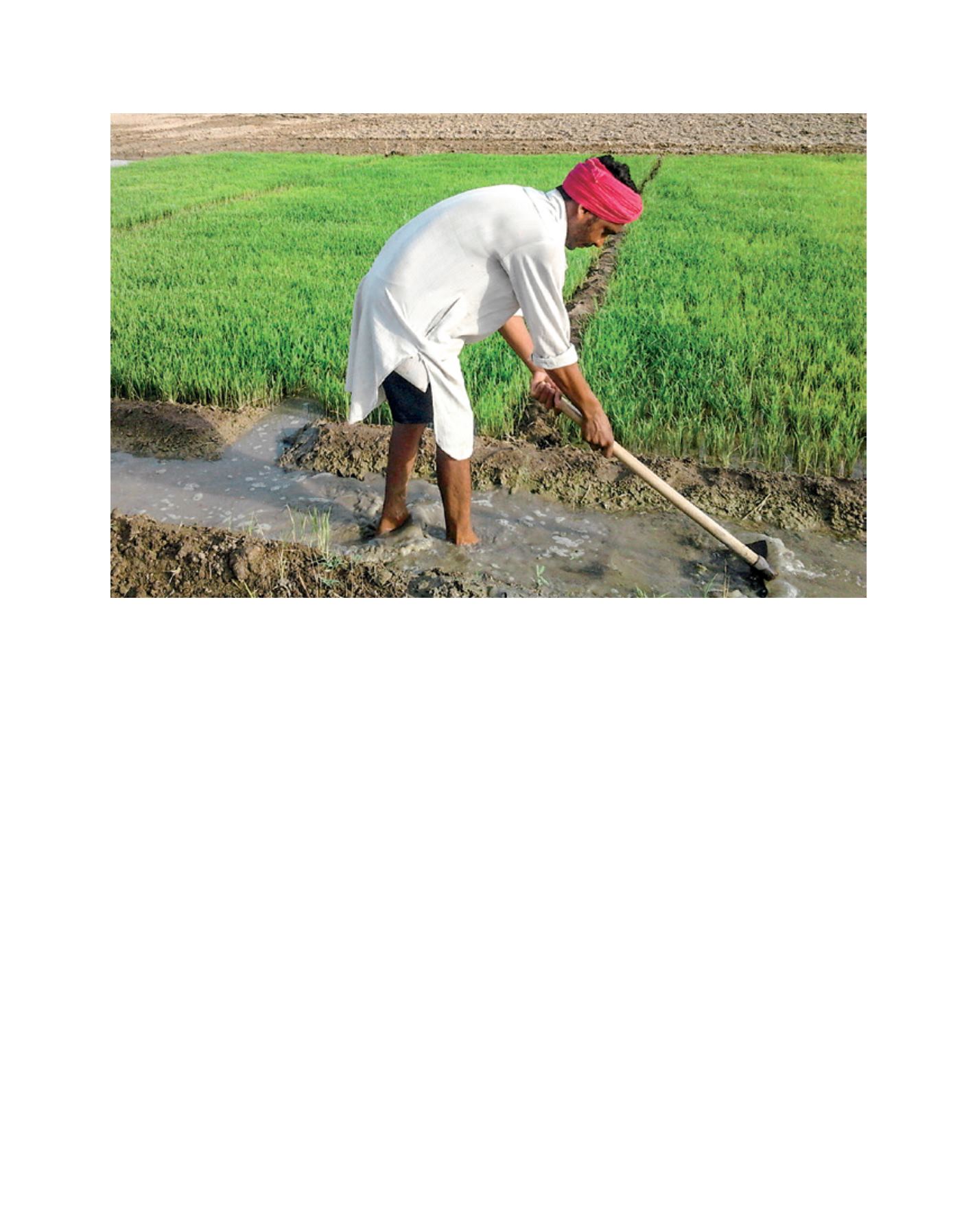

[
] 65
Image: Reuters Market Light India (RMLI)
The human and financial resources that enable India’s agricultural growth have been predominantly domestic, helping to ensure its sustainability
consensus may not occur in other spheres of the economy,
where competing visions have often led to sharp swings in
policy, as is only normal in vibrant democracies. However,
agricultural policy, especially the role of smallholder family
farms in achieving food, nutritional and livelihood security,
has been remarkably consistent.
Does this historical success suggest that the trajectory of
support will continue? Even as it can be reasonably assumed
that there is policy continuity in the medium term, new chal-
lenges to family farms will require smart responses from
policymakers to sustain the gains made in the past few decades.
Looming large above all the immediate risks is that of climate
change. This inevitable and uncontrollable global phenom-
enon threatens the very existence of smallholder family farms
and may well wipe out most of the gains made over the past
five decades, if not confronted directly and immediately.
Family farms could deploy capital and technology efficiently
to contribute to national food security due to their nimbleness
in decision-making and low overheads. This strength could
again be leveraged to help them adapt to climate-smart agri-
culture. But for that to happen the ecosystem will have to be
strengthened to deliver the necessary knowledge and financial
support. This calls for an effort across national and internal
provincial borders.
The pressures of a rapidly industrializing and urbaniz-
ing country are already telling on smallholder agriculture.
Conflicts over transfer of farmland to industry and urban
housing are increasingly becoming complex and often
violent. A balance between the two seemingly conflicting
goals of economic growth and sustainable management of
natural resources will have to emerge from the collective
wisdom of policymakers and the community engaging in
intense dialogue. Productivity enhancement with a “more-
crop-per-drop” approach, recently urged by the Prime
Minister, will have to be mainstreamed, especially in rain-
fed, dryland areas.
Finally, India will once again have to place its trust in the
strength of its family-run farms to gradually integrate its
farm sector with the global economy. It is already competi-
tive against major rivals in a host of farm products. The
current global food trade regime is no doubt imperfect and
the ground is tilted in favour of industrialized countries.
However, a calibrated opening up will yield immediate
gains by aligning domestic prices with global ones and
allow India’s hard-working farmers and its efficient private
sector to exploit opportunities in new markets. This will
also help to eventually reorient the huge subsidies on inputs
(such as fertilizer) towards investments in infrastructure,
research and extension. India’s deeply embedded democratic
processes are actually an asset, not a hindrance, in helping
to usher in this transition.
Five decades ago, India’s leadership achieved the seemingly
impossible leap of imagination to visualize farm productivity
and prosperity from impoverished family farms. A similar leap
of faith is required to bring India’s agriculture into the new
millennium. Now, as then, family farms can lead the way.
D
eep
R
oots
















